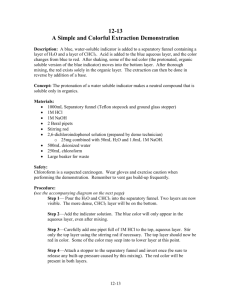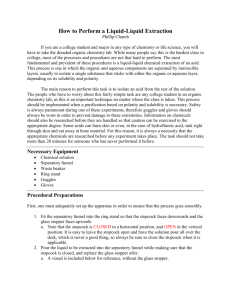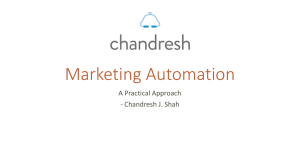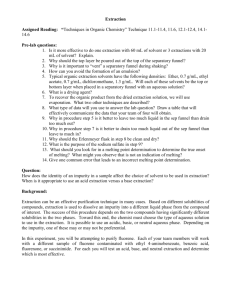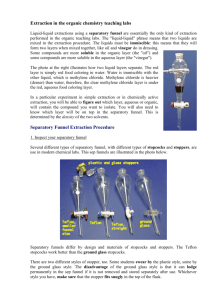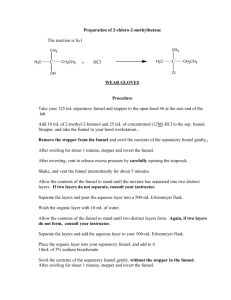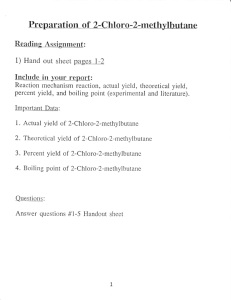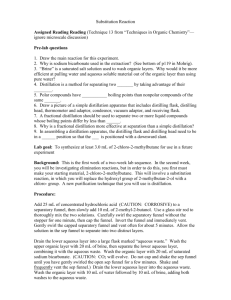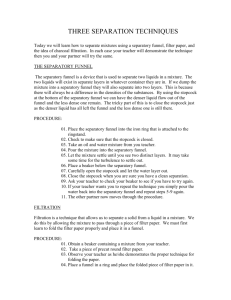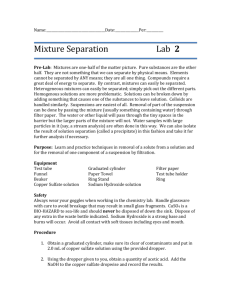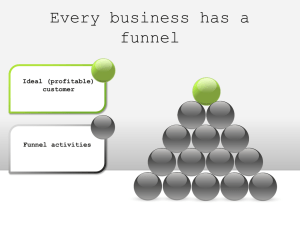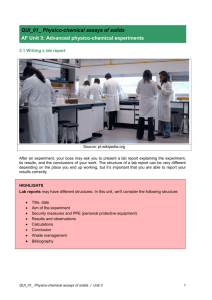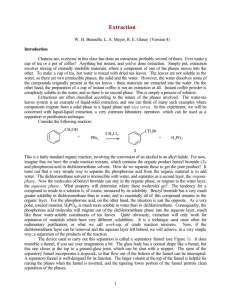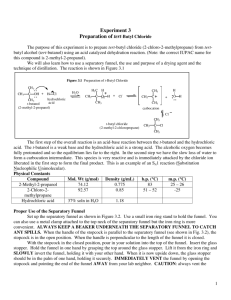Extraction
advertisement
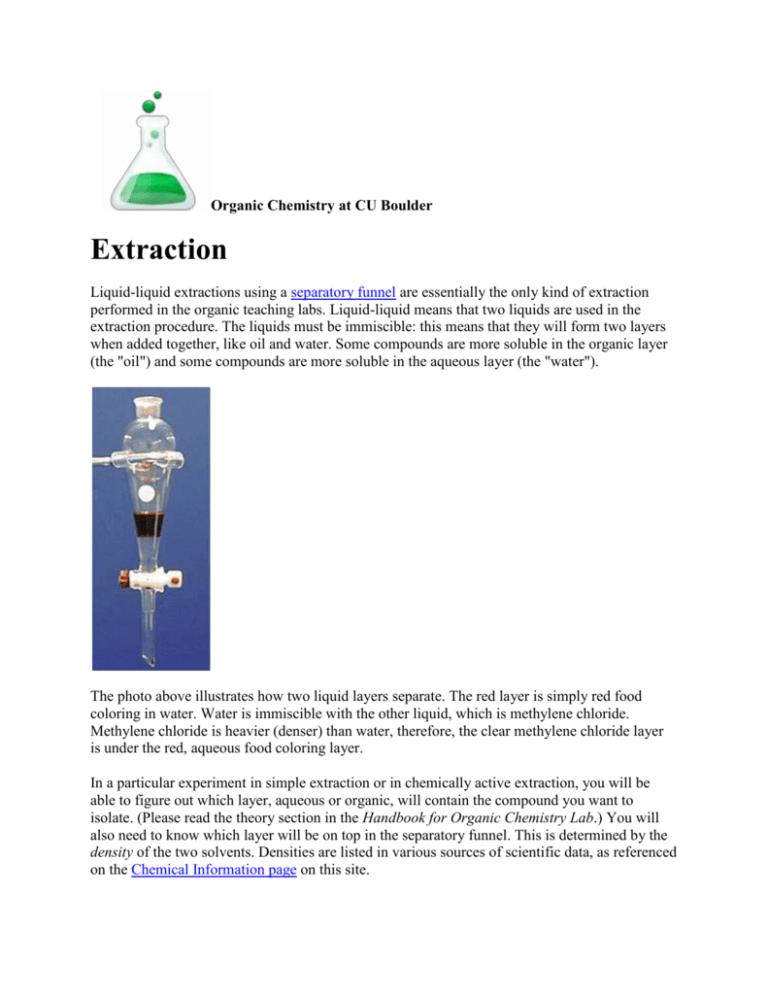
Organic Chemistry at CU Boulder Extraction Liquid-liquid extractions using a separatory funnel are essentially the only kind of extraction performed in the organic teaching labs. Liquid-liquid means that two liquids are used in the extraction procedure. The liquids must be immiscible: this means that they will form two layers when added together, like oil and water. Some compounds are more soluble in the organic layer (the "oil") and some compounds are more soluble in the aqueous layer (the "water"). The photo above illustrates how two liquid layers separate. The red layer is simply red food coloring in water. Water is immiscible with the other liquid, which is methylene chloride. Methylene chloride is heavier (denser) than water, therefore, the clear methylene chloride layer is under the red, aqueous food coloring layer. In a particular experiment in simple extraction or in chemically active extraction, you will be able to figure out which layer, aqueous or organic, will contain the compound you want to isolate. (Please read the theory section in the Handbook for Organic Chemistry Lab.) You will also need to know which layer will be on top in the separatory funnel. This is determined by the density of the two solvents. Densities are listed in various sources of scientific data, as referenced on the Chemical Information page on this site. How to do an Extraction Support the separatory funnel in a ring clamp on a ringstand. Ring clamps come in many sizes. If yours is too large, you can add pieces of cut tygon tubing to the ring to cushion the funnel, or wrap the ring with tape until it is thick enough to hold the separatory funnel. Make sure the stopcock of the separatory funnel is closed. Place a stemmed funnel in the neck of the separatory funnel. Add the liquid to be extracted, then add the extraction solvent. The total volume in the separatory funnel should not be greater than three-quarters of the funnel volume. Insert the stopper in the neck of the separatory funnel. Pick up the separatory funnel with the stopper in place and the stopcock closed, and rock it once gently. Point the stem up and slowly open the stopcock to release excess pressure. Close the stopcock. Repeat this procedure until only a small amount of pressure is released when it is vented. Shake the funnel vigorously for a few seconds. Release the pressure, then again shake vigorously. About 30 sec total vigorous shaking is usually sufficient to allow solutes to come to equilibrium between the two solvents. Vent frequently to prevent pressure buildup, which can cause the stopcock and perhaps hazardous chemicals from blowing out. Take special care when washing acidic solutions with bicarbonate or carbonate since this produces a large volume of CO2 gas. Put the funnel back into the ring and let it rest undisturbed until the layers are clearly separated. While waiting, remove the stopper and place a beaker or flask under the sep funnel. Carefully open the stopcock and allow the lower layer to drain into the flask. Drain just to the point that the upper liquid barely reaches the stopcock. If the upper layer is to be removed from the funnel, remove it by pouring it out of the top of the funnel. Often you will need to do repeat extractions with fresh solvent. You can leave the upper layer in the separatory funnel if this layer contains the compound of interest. If the compound of interest is in the lower layer, the upper layer must be removed from the separatory funnel and replaced with the drained-off lower layer, to which fresh solvent is then added. When you are finished, remember to store the stopper separately from the funnel. Extraction Movie CU Organic Chemistry has produced a movie about extraction. Extraction Technique Quiz See how well you understand extraction by taking the online Extraction Technique Quiz! Original content © University of Colorado at Boulder, Department of Chemistry and Biochemistry. The information on these pages is available for academic use without restriction. This page was last updated on May 20, 2015.

